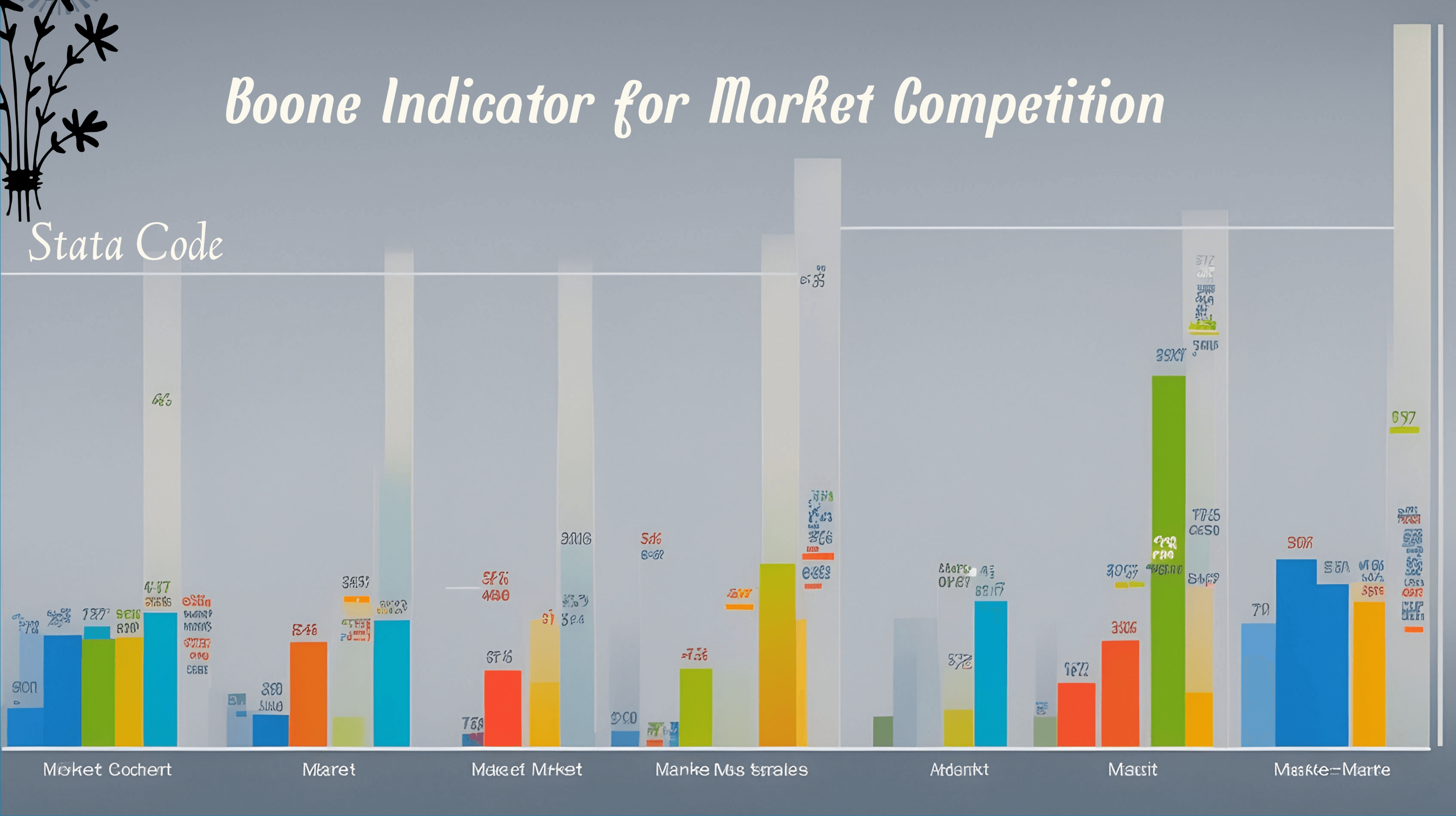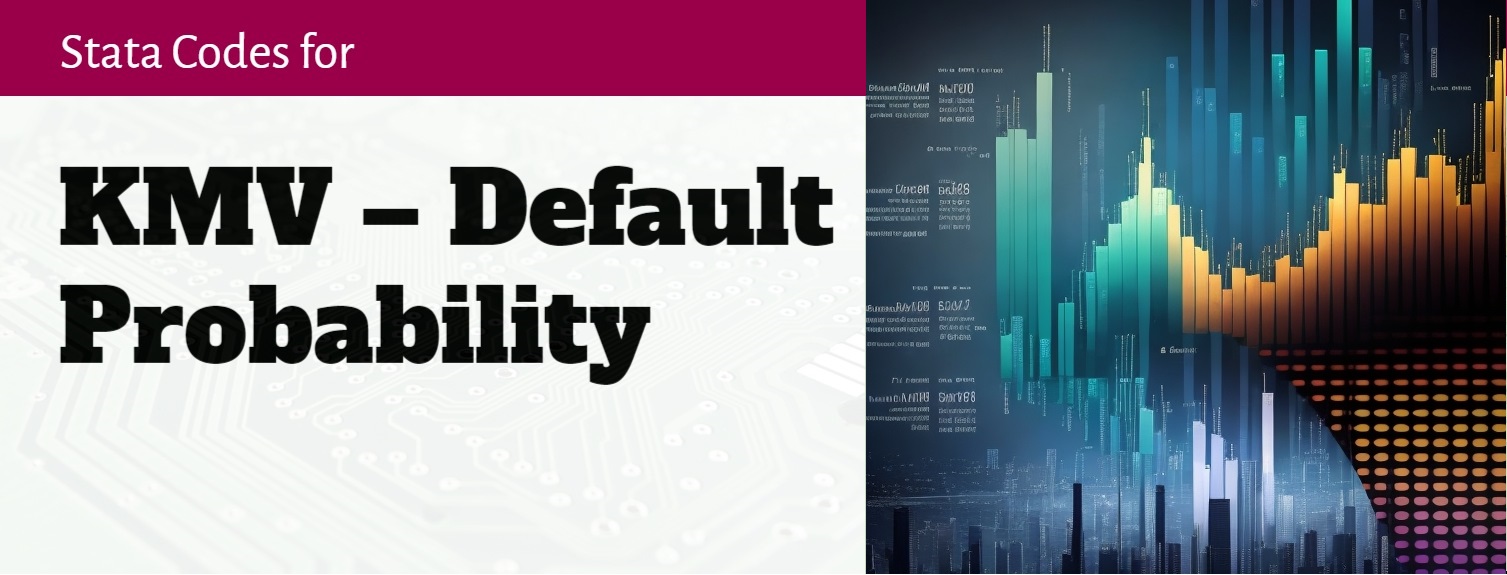
Stata code | Boone Indicator for Market Competition
Boone Indicator for Market Competition The Boone indicator is a new measure of competition based on the theoretical assumption that, in a more efficient or competitive industry, firms are punished severely for being inefficient (Boone et al., 2005, 2007; Boone, 2008). Hence, for an industry with a high level of competition, it is expected that an increase in marginal cost leads to a drastic fall in variable profits. Therefore, the Boone indicator is measured by estimating the following regression: VROA_{it} = \alpha + \beta{_t}lnMc_{ij}+\epsilon{_{i,t}} where VROA_{it} is the variable [...]
Stata Code for Dynamic Momentum Strategy
Stata Code for Dynamic Momentum Strategy Our Stata code for dynamic momentum strategy accounts for the fact that momentum returns are negatively skewed and subject to occasional severe crashes. Several research papers have recently explored the timing of momentum crashes and show that momentum strategies tend to crash in 1–3 months after the overall market crash. To exploit this fact, researchers propose a dynamic trading strategy which coincides with the standard momentum strategy in calm times, but switches to the opposite contrarian strategy after a market crash and keeps the contrarian [...]

Stata Codes for Conditional Beta using MGARCH Approach
Time-Varying Beta estimated from Bivariate GARCH This project estimates time-varying betas and conditional betas using the method outlined in "Forecasting Ability of GARCH vs Kalman Filter Method". The code uses daily data. The interesting part of the project is that it contained data for a panel of 3000 companies, however, the estimation technique required time-series analysis. Therefore, we developed the code to fit the project requirements. detail of this project: Pricing The code is available for $ $99 / per model with some example data. If the data is not in [...]

Returns to New IPOs : Stata Codes
This project investigates the under-pricing phenomenon of initial public offering (IPO) both in the short- and long-run. The project uses a variety of empirical methods used in IPO research. Following are the detail of this project: Importing different files from Excel

Stata Codes for Trading frequency and asset pricing | Price Impact Ratio
This project involved writing codes to replicate the methodology of Florackis et al. (2011), “Trading frequency and asset pricing on the London Stock Exchange: Evidence from a new price impact ratio”. The paper forms portfolios on price impact ratios using different approaches, and then finds risk-adjusted residual returns of these portfolios using a variety of asset pricing models.

P608 – Stata Codes for Measuring Financial Statement Comparability
In this project, we have developed Stata codes for the measures of Financial Statement Comparability as defined by DeFranco, Kothari and Verdi (2011). The authors first develop this measure and then test it empirically to find its determinants.

Stata Codes for Expected Idiosyncratic Skewness and Stock Returns – P603
In this project, we have developed Stata Codes for A Skewness Prediction Model. Boyer, Mitton, and Vorkink (2010) developed a model of expected skewness that incorporates past returns and trading volume as well as known firm characteristics. In this asset pricing model, they try to explain excess stock returns using trading volume, lagged skewness, and a set of control variables such as firm size, exchange dummy, stock momentum, and industry dummies as explanatory variables. What is included in our code?

Stata Codes | Absolute Strength Momentum in Stock Returns
We document a new pattern in stock returns that we call absolute strength momentum. Stocks that have significantly increased in value in the recent past (absolute strength winners) continue to gain, and stocks that have significantly decreased in value (absolute strength losers) continue to lose in the near future

Stata Code for Liquidity Adjusted (LCAPM) with Application of MGARCH
Liquidity Adjusted (LCAPM)Acharya and Pedersen (2005) presented a theoretical model to explain asset prices with four types of liquidity risks, thereby modifying the single-factor capital asset pricing model (CAPM) into a liquidity adjusted capital asset pricing model (LCAPM). They argue that expected return on a security is based on:Return sensitivity of a portfolio or an asset with the market returnCommonality in liquidity of a portfolio or an asset with the market liquidity,Return sensitivity of a portfolio or an asset to market liquidityLiquidity sensitivity of a portfolio or an asset to market returnsThe [...]
P31 – HAR RV (Realized) volatility and GARCH(1,1) comparison models | Stata
Volatility estimation models have been extensively studied, with significant findings reported in academic papers such as Engle's seminal work in 1982. However, these models struggle to explain the variation in realized volatility outside the sample, leading researchers to question their practical value. Andersen and Bollerslev (1998a) countered this skepticism by demonstrating that well-designed volatility models can provide accurate forecasts. The challenge lies in the noisy estimation of volatility using squared returns, which limits the achievable R2 from regression. Hence, significant parameter estimates do not necessarily contradict poor out-of-sample predictive performance when using squared [...]

KMV – Merton Distance to Default Model through an iterative process in Stata
Our Stata | Mata code offers a comprehensive implementation of the Merton distance to default or Merton DD model, following the iterative process employed by renowned researchers such as Crosbie and Bohn (2003), Vassalou and Xing (2004), and Bharath and Shumway (2008). By utilizing our code, you can easily apply the model using the following steps: 1.Generate log returns from stock prices. 2. Calculate the volatility for each stock in each year using daily stock returns, subsequently converting it into yearly volatility. 3. Utilize the stock volatility as a proxy for asset [...]

Implied cost of equity(ICC) with Claus and Thomas (2001) in Stata | Excel
IntroductionClause and Thomas (2001) estimate the equity premium from the discount rate that equates market valuations with prevailing expectations of future flows. Their model uses forecasted earnings and market share prices and solves for the implied cost of equity. M_t = B_t + \sum_{k=1}^{5} \frac{E_t [(ROE_{t+k} - R) \times B_{t+k-1}]}{(1+R)^k} + \frac{E_t [(ROE_{t + 5} - R) \times B_{t + 4}] \cdot (1+g)}{(R-g) \cdot (1+R)^5} where M_t is the market equity in year t , R is the implied cost of capital (ICC), B_t is the [...]

Investors attention and stock returns | Stata Codes
Investors attentions and stock returns | Stata Investors' attention is a topic of behavioral finance. Merton (1987) presented the investors' recognition hypothesis, which later was tested in a variety of empirical designs. For example, Fang and Peress (2009) found a no-media premium. Similarly, Chen (2017) documents a significant decrease in index returns following an increase in investor attention. The Google Search Volume (SVI) data provides an excellent measure of investor attention. Search is a revealed attention measure for retail investors: if a retail investor searches for a stock ticker in Google, [...]

